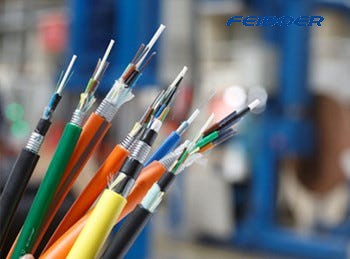Branch optical cables, also known as distribution optical cables, are used to distribute fiber optic signals from a main cable to individual devices or endpoints. These cables are designed to split the main cable into several smaller cables, each of which is connected to a different device. Branch optical cables are essential components in modern communication networks, providing reliable and efficient signal distribution. However, like all cables, they are susceptible to faults that can impact their performance. This article will explore the common problems that can occur with branch optical cables and the solutions that can be applied to prevent them.

Cable Crush
Cable crush occurs when the cable is subjected to excessive pressure or crushing force. This can cause the fibers in the cable to become damaged, resulting in signal loss or poor signal quality.
Solution: To prevent cable crush, it is essential to ensure that the cable is not subjected to excessive pressure or crushing force. The cable should be installed in a manner that prevents any crushing or pressure on the cable. It is also important to follow the manufacturer's recommended installation procedures and use appropriate cable supports to prevent any weight from being applied to the cable.
Cable Tension
Cable tension occurs when the cable is stretched too tightly. This can cause the fibers in the cable to become damaged, resulting in signal loss or poor signal quality.
Solution: To prevent cable tension, it is essential to ensure that the cable is not stretched too tightly during installation. The cable should be installed according to the manufacturer's recommended installation procedures and guidelines. Cable tension should be measured during installation to ensure that it is within acceptable limits.
Connector Issues
Connector issues can occur when the connectors are dirty or damaged, or when they are not properly aligned with the fibers in the cable. This can cause signal loss or poor signal quality.
Solution: To prevent connector issues, it is essential to ensure that the connectors are clean and undamaged. Connector cleaning should be done using a lint-free cloth or a specialized cleaning tool. It is also important to ensure that the connectors are properly aligned with the fibers in the cable during installation. Connector alignment can be checked using a fiber optic tester.
Cable Bend Radius
The bend radius of the cable is the minimum radius at which the cable can be bent without causing damage to the fibers in the cable. If the cable is bent too tightly, the fibers can become damaged, resulting in signal loss or poor signal quality.
Solution: To prevent cable bend radius issues, it is essential to ensure that the cable is bent according to the manufacturer's recommended bend radius. It is important to avoid sharp bends or kinks in the cable, and to use appropriate cable supports to prevent excessive bending.
Environmental Factors
Environmental factors such as temperature, humidity, and exposure to chemicals can impact the performance of branch optical cables. Temperature extremes can cause the cable to expand or contract, resulting in fiber damage. Humidity can cause moisture to enter the cable, affecting signal quality. Exposure to chemicals can cause the cable jacket to deteriorate, resulting in cable failure.
Solution: To prevent environmental factors from impacting the performance of branch optical cables, the cables should be installed in a controlled environment. The temperature and humidity should be monitored, and the cables should be protected from exposure to chemicals. The cable jackets should be made of materials that are resistant to chemicals.
Improper Splicing
Improper splicing can occur when the fibers in the cable are not properly aligned during splicing, resulting in signal loss or poor signal quality.
Solution: To prevent improper splicing, it is essential to ensure that the fibers are properly aligned during splicing. This can be done using specialized splicing equipment and techniques. It is important to follow the manufacturer's recommended splicing procedures and guidelines.
04-24
202404-23
202404-23
202404-08
202404-07
202403-26
202403-26
202403-18
202403-18
202403-13
2024
